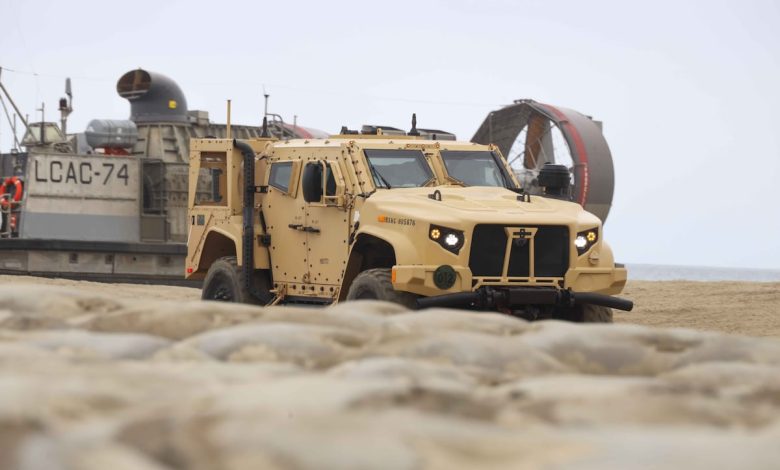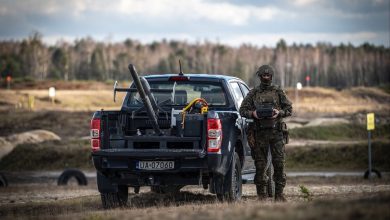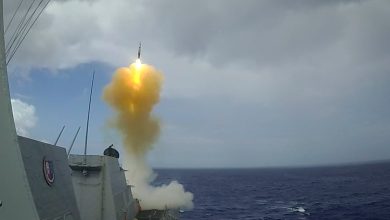Marines sticking with JLTV after Army cancels future vehicle buys

The Marines are sticking with the Joint Light Tactical Vehicle, even as costs may rise following the Army’s decision to halt the program.
The joint program office for the Army and Marine Corps first picked Oshkosh Defense to build the JLTV in August 2015, and in 2023 awarded a follow-on contract to AM General, according to a Congressional Research Services report released Monday.
“The Marine Corps is fully committed to the JLTV program. It is our workhorse on the ground tactical vehicle fleet,” Marine Corps Commandant Gen. Eric Smith said in a House Appropriations subcommittee on defense hearing May 14. “It’s a little bit too early to assess the impact of the Army stopping their version of the program, but per-unit costs are clearly going to go up … when the orders go down.”
The JLTV was originally intended to replace the Marine Corps’ and Army’s light tactical vehicle fleets, which consist mostly of Humvees. The initial low-rate production contract awarded to Oshkosh Defense was valued at $6.7 billion for the first 16,901 vehicles, according to the CRS report.
A follow-on contract valued at another $8 billion awarded to AM General would have built another 30,000 JLTVs and 10,000 trailers for the vehicles.
Smith anticipates the unit cost to rise because of the Army decision, and the Corps is “still assessing the full impact of the Army’s abrupt exit from the joint program.”
“That’s going to negatively impact the Marine Corps’ ability to fulfill its ground tactical vehicle mobility strategy, which has me concerned,” Smith said.
The Marine Corps relies on the JLTV for its ROGUE-Fires and Marine Air Defense Integration System, or MADIS. The ROGUE-Fires system uses a remotely operated JLTV without a cab to fire the Navy/Marine Expeditionary Ship Interdiction System. The MADIS is a counter-drone weapon also mounted on the JLTV.
“At this time, AM General has [a] backlog for deliveries of vehicles through 2027 and AM General remains committed to meeting our contractual delivery requirements,” AM General said in a statement May 2 in response to the Army’s decision to divest. “As we work to understand the significance of the DoD’s recent communications, we will continue to operate our HUMVEE and JLTV A2 assembly lines and our Aftermarket Fulfillment facility as normal to meet our contractual requirements and serve the Warfighter.”
The vehicle, available in two- and four-seat versions, can be transported by various aircraft, including rotary wing, according to the CRS report.
Instead of acquiring more JLTVs, the Army plans to fulfill some of its mobility requirements with the Infantry Squad Vehicle, a much smaller, scaled-down all-terrain vehicle.
An Army Transformation Initiative memo published May 1 noted the service would divest the vehicle over time. So far, the service has acquired 20,000 vehicles. The Army began fielding the JLTV in 2019, the same year the Marine Corps began receiving its first vehicles.
House Appropriations subcommittee member Rep. Betty McCollum, D-Minn., said she was “dismayed” to learn the Army did not communicate its intentions to the Marine Corps before making the divestiture decision.
“That is beyond disappointing. Joint means joint. That’s what the ‘J’ stands for. Joint decisions should be informed together as part of joint programs if they need to change,” McCollum said.
Speaking to reporters in Tennessee on May 14, Army Vice Chief Gen. James Mingus said the Army purchased its last tranche of JLTVs in January, according to Breaking Defense.
“We will do no future procurement buys for the JLTV, for the Army, but the Marine Corps, [Foreign Military Sales] partners [can],” Mingus said. “We think that we have enough, they [USMC and foreign customers] can continue to do that. But for us, inside of our armor and heavy and Stryker formations, we have enough JLTVs. We’ve bought enough already.”
Todd South has written about crime, courts, government and the military for multiple publications since 2004 and was named a 2014 Pulitzer finalist for a co-written project on witness intimidation. Todd is a Marine veteran of the Iraq War.







